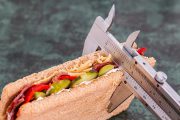When Nutrition is the Hardest Part
We’ve written before about the importance of nutrition when it comes to not only being healthy, but a critical element of successful weight loss. But it’s not unusual for a personal training client to commit to fitness, to work exceptionally hard in the gym, to show up two, three, four times every week, and then to fall well short when it comes to nutrition. The truth is, nutrition is the hardest part.
The Importance of Nutrition
“Nutrition is everything. I cannot emphasize that enough,” says Morgan Vitti, one of the trainers at Framework Personal Training in Reno. “You can put hours into the gym, train seven days a week, but throw everything away with what you put into your body.”
And it’s not just aesthetics. Proper nutrition can help you maintain a healthy weight, but it can also reduce your risk of chronic diseases (the bad stuff like heart disease and cancer) while promoting your overall health and vitality. A diet rich in takeout, sugary sweets, alcohol and empty carbs effectively negates any positive benefits from all your hard work in the gym.
Fueling your body properly can be challenging, but like anything, it becomes easier with practice. And with today’s technology, it’s actually easier today than it has ever been.
Tracking Macros
One of the best ways to start eating for nutrition is by counting your macros, or macronutrients. Macros are the molecules our bodies use to create energy, and the three main macros are fats, proteins and carbs. You can find them listed on any nutrition label. Each gram of fat is nine calories, and one gram of protein or carbohydrate is 4 calories.
When you’re counting macros – and not calories – you can ensure that you’re not just eating the right quantity, but the right quality of foods too.
“I always tell my clients to track everything they put into their bodies for one week into an app like MyFitnessPal,” says Morgan. “This way, clients can get an idea of what exactly they eat and it gives me an idea of areas that need a little TLC.”
Those who are new to tracking their macros are often shocked, says Morgan. “More often then not, people think they are eating healthy and then are surprised to see the actual macro, micro, and caloric break down of what they have been eating.”
Targeting Macros
There are plenty of online calculators that will help you calculate your optimal macros, based on factors like your age, gender, weight, activity level, etc. Once you have this baseline, you can start paying closer attention to what you’re eating. Using an app makes it easy – you just input your food and serving size, and your macros are automatically calculated. Then you can tell at a glance where your daily nutrition is, and if you need to slow down on carbs or ramp up the protein, for example.
A food scale is another useful tool when you’re tracking macros – you can use it to measure serving sizes for foods that aren’t labeled (fruits, meats, etc.). While it seems like a lot of work in the beginning, you’ll become quite adept at eyeballing portion sizes.
Personal Trainer as Nutritionist?
Not every trainer is qualified to offer nutrition information, so it’s a good idea to inquire ahead of time. A trainer who can help shape your physique in the gym and in the kitchen is a wonderful investment. If that’s the kind of trainer you’re looking for, contact us today to set up a meeting with Morgan.








Leave a Reply
Want to join the discussion?Feel free to contribute!